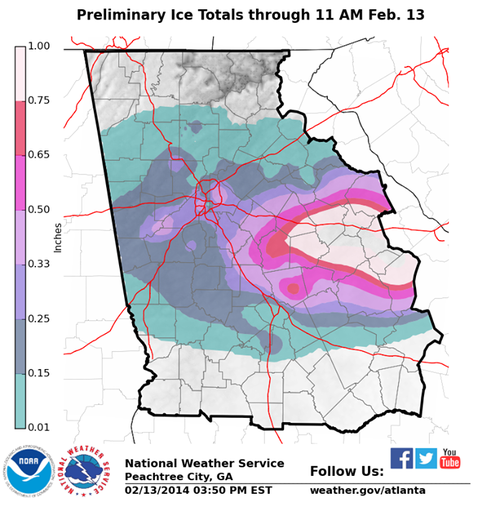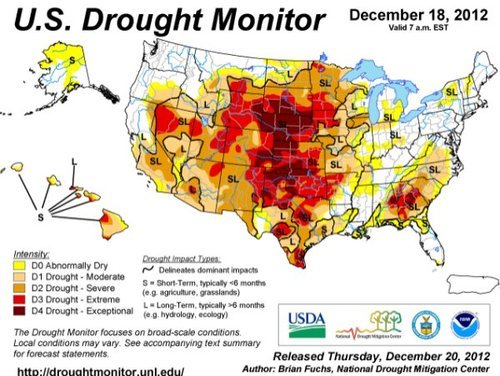US East Coast Experiences another Blast of Winter
Yet another winter storm has affected the US Southeast and eastern seaboard this past week. The low pressure quickly organized just offshore over the warm waters of the Gulf Stream, but at the same time dragging down brisk Arctic air all the way down to the southern states such as Georgia and Alabama. As the low pressure system moved north, just off the coast it quickly became a “meteorological bomb”. A meteorological is defined by a low pressure deepening 24mb in 24 hours, which means deep intensification is occurring. It’s not uncommon to see this occur off the coast in winter because of the large contrast between ocean and land temperature, but is uncommon to see this happen in the middle of the continent.
Due to this storm, over 6,000 flights had been cancelled across the eastern seaboard and services totally shut down in the south for 36 hours because of the storm. It appears that the worst damage occurred from Augusta Georgia, westwards, to just south of Atlanta. Here ice accumulation totals approached 2.5cm which made trees and power lines top heavy and eventually collapsing. Snow amounts in the northeast US were also impressive, where snow rates of 10cm/h fell in the heaviest bands. The highest reports were 70cm in South Berne, NY and 61cm in Shrewsbury, VT. Thundersnow was also reported just west of New York City as multi-cell thunderstorm clusters drifted north of the warm front and transitioned to snow producers.

Residents should not put their shovels away quite yet though as a strong low off the coast is expected in the Wednesday-Thursday timeframe next week which will be another big weather producer for the East Coast.

